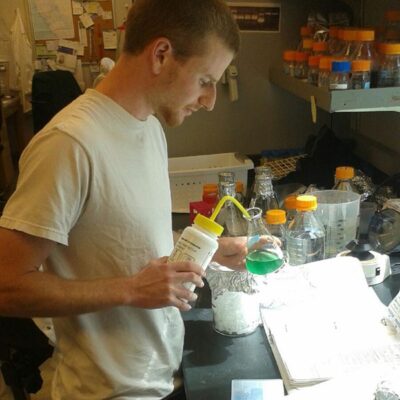Ron Cook L&S Sciences
Photosystem II Assembly in Cyanobacteria
Nearly all life on Earth depends on oxygenic photosynthesis, the process by which light energy is used to create sugars and oxygen from water and carbon dioxide. In plants and algae, it is carried out in organelles called chloroplasts, which are cousins of photosynthetic bacteria known as cyanobacteria. Both chloroplasts and cyanobacteria contain membrane-enclosed sacs called thylakoids, and the light-dependent reactions of photosynthesis take place in the thylakoid membrane. Here, light hits the protein complex Photosystem II (PSII), and this energy is used to split water into oxygen, protons, and high-energy electrons, which are carried through a transport chain that ultimately produces NADPH and ATP. PSII is composed of 20-30 proteins and ~70 cofactors, and my project is to develop and characterize mutants in cyanobacteria where these are not correctly assembled. This includes rubA in Synechocystis sp. PCC 6803 and Thermosynechococcus elongatus BP-1, as well as slr1470 in Synechocystis.
Message To Sponsor
I have been working in the Niyogi Lab for almost two years, and this has been the most significant educational experience for me at UC Berkeley. Working in the summer will allow me to devote all of my attention to my project, and to make exciting progress that is not feasible during the school year. Thank you to the Pergo Foundation for providing me with this opportunity. I am now confident that I will be prepared for a senior honors thesis in my final semester at Cal.